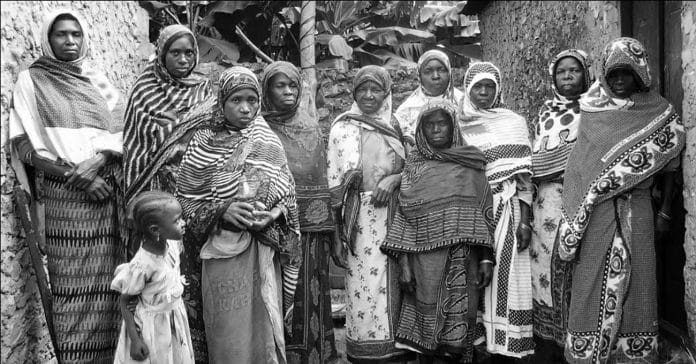Zaramo Tribe – Origin, Language, Culture, Initiation and More
The Zaramo people, also known as Saramo or Dzalamo, are an ethnic group in east Africa domiciled along the shore of Tanzania, especially in its Pwani Region. The Zaramo are the biggest ethnic nationality living inside and around the seventh-largest African city and erstwhile capital of Tanzania, Dar es Salaam. With an estimated population of 700,000, more than 98 percent of them are Moslems, more particularly the Shafei school of Sunni Islam. Their history and culture have been influenced by their habitation of rural and urban landscapes.
Origin of the Zaramo Culture
According to stories, the Zaramo people descended from the Shomvi people under the leadership of Pazi during the early 19th century. An offshoot group of the Kamba people from Kenya attacked the Shomvi people, a mercantile tribe dwelling in an area around modern-day Dar es Salaam. The Shomvi solicited the help of Pazi, who dwelled in the backcountry. When Pazi overcame the Kamba people, he requested cloth, salt, and many luxuries as payment. When they couldn’t meet the demands, they asked him and his household to dwell with them, where they would be given a yearly tribute. The conflict and its consequences are believed to be the genesis of the Zaramo.
Zaramo Language
The initial Zaramo language, occasionally referred to as Kizaramo, is a Bantu language. It belongs to the Niger-Congo language family. However, only a handful speak the language in modern-day Tanzania because most have adopted Kiswahili as their first language. After all, it is the national language of Tanzania and the language of trade on the coast of East Africa.
Zaramo language is still utilized in many Zaramo ceremonies like the mwali rituals, although they usually appear alongside Kiswahili translations.
Zaramo Society
In scholarly research, the word ‘Zaramo’ also refers to a smaller ethnic group. The larger Zaramo group comprises Zaramo proper and some related peoples like the Sagara, Vidunda, Kaguru, Kami, Kwere, and Kutu peoples.
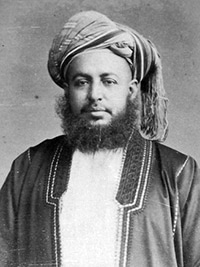
Historically, the Zaramo people have been victimised by slave trading and slave raids by the Arab-Swahili merchants of Zanzibar. They built villages fortified with stockades to resist the persecution. Many left their homes and would only return to fish and farm during the day. According to Nancy Clark Edward, Alpers, and William Worger, Zanzibar Arabs took their slave raid to the mainland, where they seized pagan Zaramo children and adults, gagging them so that they won’t cry before finally selling them off to the merchants. Sometimes during a famine, like the 19th-century reign of Barghash ibn Said of Zanzibar, out of desperation, some Zaramo people sold and pawned each other for sustenance.
The coastal meeting between the African populations and the Persian-Arab, typical of Eastern Africa, since around the 8th century influenced the history of the Zaramo society. During colonial rule, the influence stemmed from the meeting between Africans, Arab-Swahili emissaries, and the powerful Europeans. However, it generally integrated the previous slave-driven social division model.
According to a professor of History specialising in African affairs, Elke Stockreiter, the slaves taken from among the Zaramo people and various tribes like Nyamwezi, Yao, and Makonde peoples from the mainland and brought to the coastal part of Tanzania and Zanzibar wanted social inclusion and tried to reduce the inferior treatment they got from their slave owners by adopting Islam and adapting to the religion in the 19th century. Reversion to Islam among the Coastal Zaramo people started around the 19th century. According to Stockreiter, these historical events have affected inter-ethnic relations and politics in 20th-century Tanzania.
Zaramo Initiation
The youths of the Zaramo tribe require initiation rituals to become full members of the adult society. These rituals generally take place around puberty and the female’s first menstruation.
Zaramo Males
The male ceremony is called nhulu or (growth). The initiation is done during the dry season and once in three years. Each mwali (novice) has a specific instructor known as mhunga. The mhunga guides the youth through the process of circumcision and teaches Zaramo practices and sex lore. As soon as the mwali are circumcised, they are moved to an initiation hut (kumbi), where they learn several things and are not allowed to take their bath for 14 days. When the mwali are finally allowed to bathe again, their mothers hold a village dance (mbiga) in the village. After another eight days, the mwali go back to the village, and their instructors proceed to torch the kumbi and any other item linked to the initiation. The mwali have now become men of the society and celebrate with a Zaramo dance of emergence known as mlao.
Zaramo Females
Initiation for a girl child begins with her first menstruation. The rites associated with female initiation are done to enrich and protect a girl’s fertility and female power. A girl-child has a reproductive cycle within the society – one that begins with her first menstrual flow, continues to her initiation, marriage, childbirth, and eventually ends when her grandchildren come of age. The novice girl, also referred to as mwali, is isolated in her mother’s house for a period of at least two weeks or at most one year. Earlier documents indicate that this process could have lasted five years in the past. The mwali’s paternal aunt usually takes the role of shangazi. The shangazi takes charge of the mwali’s ceremonies and teachings. The initiate is taught domestic roles like childcare, housekeeping, moral and sexual behaviour, and mature interaction within the larger society. During isolation, the mwali is not allowed to work, go outside, or speak to symbolise her death and emphasise her re-emergence as a symbolic birth. She is then taken to a mkole tree, where she is circumcised by the mnhunga. She is finally returned to her family, and her arrival is celebrated with a mbwelo Zaramo traditional dance.
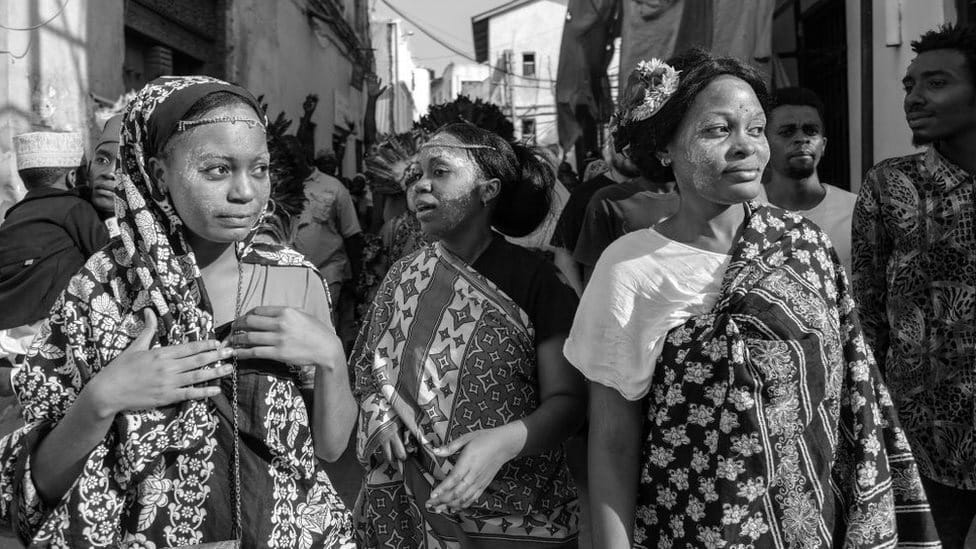
Zaramo Mwana Hiti Figures
Mwana Hiti figures can also be called mwana nya nhiti, mwana mkongo, or mwana nya kiti. These names stemmed out of mwana, which means child and nya hiti and nya kiti (chair and wood). Mkongo is a reference to the mkongo tree from which many mwana hiti are carved. Mwana hiti may be represented in other forms apart from figures, like stool, staff, grave posts, walking sticks, among others. Mwana hiti is not an individual’s property. Instead, it belongs to families, and it’s passed down from one generation to the next, sometimes up to 50 or 40 years.
Appearance
Mwana hiti is typically made with wood. Some Zaramo traditions claim they ought to be made with gourds since gourds symbolise fertility. The size of the mwana hiti varies; the average is approximately 10 cm. They can be projections of a kid, a mother with a kid, or a mwali. Mwana hiti are cylindrical figures with illustrations of a torso and head of relatively commensurate size and usually no legs, genitalia, or arms. A navel, hair, and breasts are usually present. Facial features are abstract and simple. They are sometimes not present. The figures may be adorned with metal if hair is present. Alternatively, there can be white beads as jewelry.
Function
Mwali hiti is designed to inspire ‘a caring consciousness’ within the mwali to imbue the desire to have kids. They also serve as the primary socialising tool for the mwali during her isolation, sizing up her skills as a future mother and teaching her the responsibilities attached to womanhood, like taking care of herself and kids.
Mwali must treat the mwan hiti as her child, oiling it, bathing it, feeding it, and dressing the hair (the mwali wears the same style). If she doesn’t accomplish these motherly tasks, she may not be fertile in the future. Fertility is held dear in Zaramo culture because children are seen as cultural and economic goals for legacy and prosperity.
If a woman experiences fertility after the completion of her initiation, she may choose to repeat isolation and the mwana hiti rituals. This means the mwana hiti can as well double as tambiko (sacrifice) as a way of creating stronger bonds with the spiritual world.
Creating Mwana Hiti
Men carve mwana hiti. Many of them create reputations for their highly sought-after figures. Mwana hiti are only commissioned, and a family cannot commission more than one figure at a time. Carvers are also not allowed to create mwali hiti if a family already has one. The carver carves mwana hiti out of a piece of wood or, in some cases, a gourd that he picks out. The family provides any jewelry or hair decorations.
Livelihood and Culture
In terms of dressing, the Zaramo people have copied the Swahili-Arab culture. They wear skull caps, and they also engage in Islamic festivals and observe other Moslem observances. However, they continue their pre-Islamic customs, such as matrilineal kinship. Also, a few pursue the Kolelo fertility cult and worshipping their ancient god Mulungu. The Mganga traditional practice(medicine man), as well as Moslem clerics offering spiritual services as divine healers, remains popular among the poor Zaramo people.
The Zaramo people are stable farmers who also keep fish and livestock, but they are also migrant workers in tourist sites around Tanzania and the capital city. They consider business (biashara) their job. They dwell in shanty clusters of villages known as pangone. They produce staple food items like cassava, sorghum, maize, and millet, as well as cash crops like bananas, pineapples, oranges, legumes, coconuts, and cashews. Cassava is essential to Zaramo agriculture because it can germinate with very little rain.
Fishing is popular for trade and personal consumption among the Zaramo people of the coastal areas. Some Zaramo may also choose to make charcoal, brew beer, or dig for copal as a source of income. Those with specialised professions, mafundi or diviners and healers, mganga, hardly work these positions full time. They often work in agriculture to supplement it.
Creation of the United Republic of Tanzania
The independence of the Archipelago of Zanzibar in 1963 and Tanganyika in 1961 and the subsequent creation of the United Republic of Tanzania caused a major shift in Tanzanian culture, as well as the Zaramo culture. In 1963, 132 chiefs and headmen lost their political positions as government executives. The diminished status of headmen and chiefs has led to a decrease in their number and the traditions associated with them.
Death in the Zaramo Culture
Zaramo people respect and revere their dead. They believe that life continues into death, where the spirits of the departed (mizimu) only bring bad luck upon the living. Infertility, illness, poor agriculture, and death can be attributed to the mizimu’s spitefulness. Tambiko is the funeral ritual where the family cleans the grave and offers drink and food to the deceased and each other. Sometimes, a temporary hut is erected around the grave to serve as a shrine. After the independence of Tanzania in the 1960s, an increasing percentage of Zaramo people have asked to be interred in their home villages on church grounds or on private land.
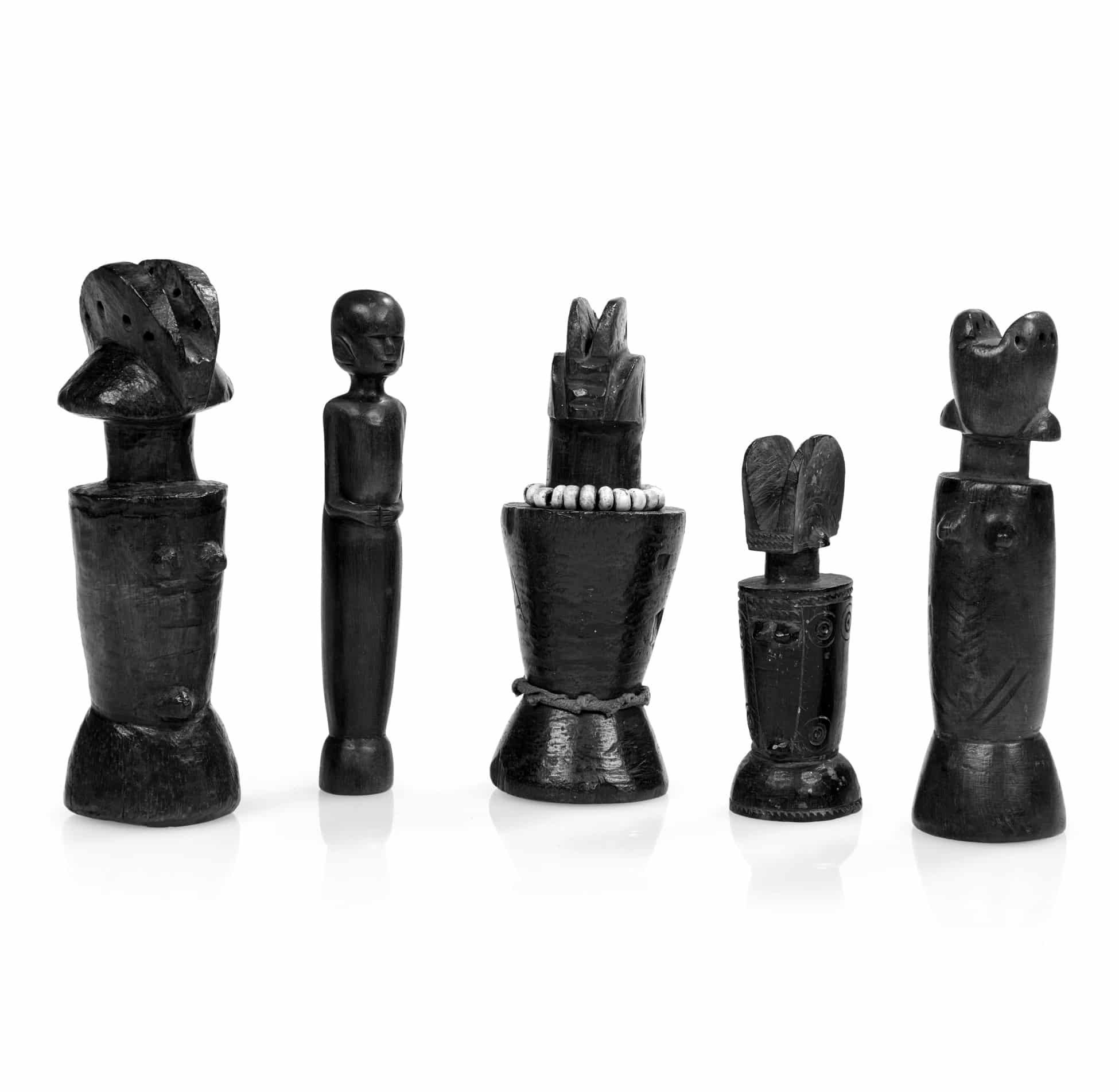
Grave Markers
The impact of Islam and the increase in literacy and urbanisation are said to be responsible for the decline in traditional Zaramo figure grave posts. Most of the grave markers found today are slab markers with written notifiers and sentiments. As a result of decreasing land availability in Dar es Salaam, there has been an increase in unmarked gravesites holding multiple bodies. This trend has resulted in higher importance being placed on adequate grave marking.
Traditional Zaramo grave figures go by different names: nguzo za makaburi (grave posts), mwana hiti (not in contemporary use again), mashahidi wa makaburi (grave witness). These figures are considered representations or witnesses of the dead. Mwana hiti grave figures are different from the initiation figures of mwana hiti. The former were majorly used for the graves of chiefs or headmen. Sometimes, the grave markers take the form of marionette-like wooden puppets known as motto wa bandia to become honorary mnemonic devices.
Prestige Staffs
Apart from its use as walking support, a staff is used as a representation of power, ritual aids, and titular symbols. Oftentimes, specific staffs are signifiers of linguists, diviners, and chiefs.
Kome Staffs
Traditional kome staffs are long staffs made with mpingo (blackwood) and are carved to possess human (usually women) and animals decoration. Mwana hiti were common top decorations prior to Tanzania’s independence. These staffs are usually associated with the power of chiefs, and so their dwindling presence is directly related to the dwindling number of chiefs in Tanzania.
Kifimbo Staffs
Kifimbo literally translates to “small stick.” They are mainly used to symbolise military authority. It is either tucked between the torso and the upper arm or held in hand. The staff has no functional use and is regarded as a purely symbolic item.
Zaramo Pottery
Usage
By the early-mid 20th century, much of Zaramo pottery was made up of imports from India, Japan, and Europe and internal creations. Most of Zaramo pottery comprises earthenware dishes and cooking pots as well as ceramic water jars. Generally, pottery is made for kitchen use, thereby resulting in two main uses/types: vessels for serving food and cooking (curved and open rims) and vessels for holding liquid (narrow-rimmed).
Cooking dishes may range between five to 12 inches in diameter and two to three inches in height, often topped with a flared, open rim. General cooking pots are known as chingu. Dishes made strictly for frying are known as kikaango or kaango (depending on the size). Smaller bowls are referred to as bakuli. Kitezo or Chetezo are shallow dishes specifically made to be mounted on shrine pedestals to hold incense offerings.
Mtungi are big pots that sometimes reach two feet in height. They are specially made to hold water for drinking and bathing. Generally, a household has two mtungi – one for each use. Oil drums or buckets sometimes replace mtungi. These manufactured alternatives offer more durability, although they don’t keep the water as cool as the mtungi. Mtungis often have weaker necks that are prone to chipping and cracking.
There isn’t much difference between pottery for rituals like grave offerings, healing rituals, and mwali bathing and pottery for daily use. Regular pottery may be used, although many rituals require the vessel to be new.
Process
Most of the potters in Zaramo culture are females. They are known as fundi wa kufinyanga (master potters). Pottery is regarded as a work that augments the domestic and agricultural roles assigned to women. Unlike most of Africa, Zaramo women don’t sell their pottery in the market. Instead, they operate on a commission/order system. Although any woman can choose to practise pottery, many learn from older relatives during their mwali isolation period, where they learn domestic skills. Pottery is a physically tasking job; this is why women retire from the practice.
Quality clay is the most important part of pottery in Zaramo culture. Many potters even choose to mix different types of clay to attain maximum durability through the firing process. Pottery wheels are not used. Instead, the coiling method is used for larger vessels, while the pinch pot technique is used for smaller vessels. After being formed, the pottery is usually left to dry out for two to seven days before being fired in a wooden fire. The vessels are mounted on fire, and more plant material and wood are placed on the vessel. Firing takes two to three hours. If the pottery is to be coloured, it is done immediately after firing.
Ornamentation and Finish
The body of the vessel is burnished using shells, stones, metal, and seeds, while the rim and neck are smoothed with paper or leaves.
Colour is added immediately after firing. It mostly comprises blacks and reds. Red pigment is made in two ways. The first is by heating of kitahomyse grass seeds, which turn into a solid mass that is subsequently rubbed onto a freshly-fired vessel to transfer the pigment. The second is by boiling the mzingifuri plant and dipping the vessel into the pigment. Black pigment is made from grinding tree bark into powder and mixing it with citrus juice or water.
Pottery ornamentation is appreciated in Zaramo culture; however, it is not considered essential. The decoration is either painted on or incised using shells, bamboo, and millet stacks. The lids (funiko) are only painted, not incised. The Biiki are comb-like tools made to draw incised parallel lines. All incised decorations are called mapambo or marembo, but there are specific names for other patterns like mistari (vertical lines), ukumbuo (horizontal lines), and huku na huku (zigzag).
Zaramo Basketry
Usage
Basketry is a practice quite common in Tanzanian and Zaramo culture. It can be divided into different types.
Baskets made for a day or two’s use are known as pakacha. They are made with fresh palm leaves and are usually used for carrying small quantities of wares, whether to the marketplace or for travel. They are disposable and are fabricated by common people, not specialists. A larger and sturdier variant of pakacha is knowns as tenga. It is designed to convey heavy loads. Therefore, they are made with bamboo instead of palm leaves. More tightly woven bamboo is used to make kikota (mini beer vessels) and ungo (winnowing and food tray).
Kawa are adorned food covers made from mkindu (wild date palms). They are usually decorated with Swahili proverbs, flowers, vegetables, and fruits. Vipepo are fans similar to kawa. There are many types of mats; they include msala (oval-shaped prayer mats), mkeka (big rectangular sitting mats), kumba (fence and wall mats), jamvi (sturdy mats for covering porches), and vitanga (smaller versions of jamvi).
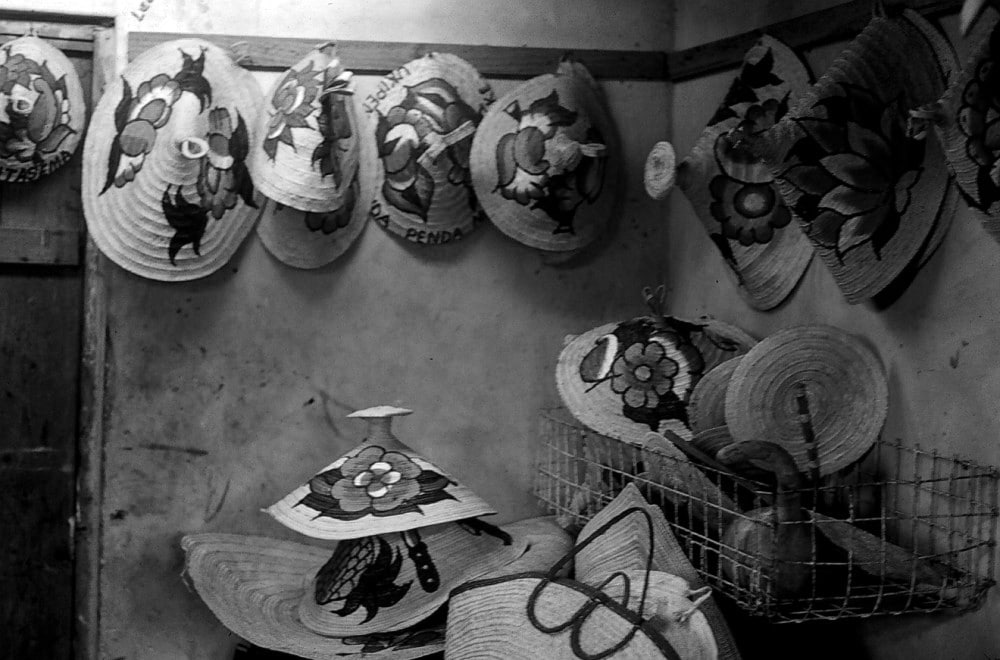
Process
Basketry is made mainly with bamboo, date palm leaves, and dwara palm leaves. The plant fibres are put into plaits, of which there are various types, like pacha for crossroads, vinyota as ’stars’ and jicho la kuku for “chicken eye.” After plaiting the plant fibres into long strips, they are then sewn together to form the desired basket shape. In the past, basketry was sewn together with coconut fibres. However, twine and plastic from bags are more common today. Many baskets are designed to have a natural colour, although some are dyed. Basket dying is usually in red-orange or black from mzinfeguri berries and mdaa roots, respectively. An awl or needle and a paring knife are the only tools needed.
Although anyone can learn basket-making, it is often taught through the family. Basketmakers are known as fundi kusuka, “plaiting masters.” Like pottery, basketry is regarded as a part-time job only. It is not unusual to find men handling weaving that uses bamboo while women handle the weaving that requires palm leaves. Also, men often handle the decoration.
For more articles on the Tanzania Tribes click here!

























